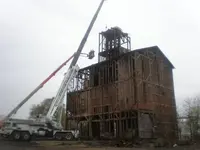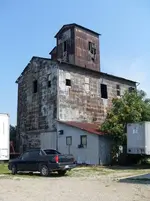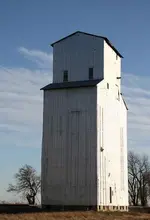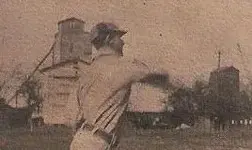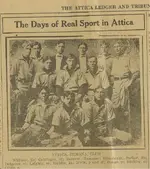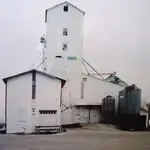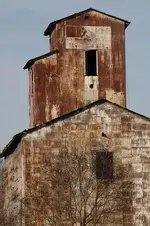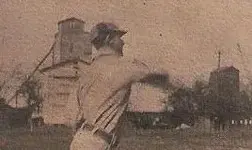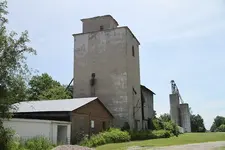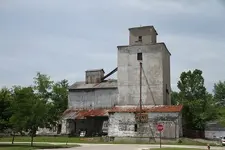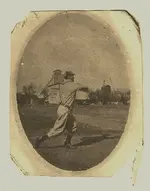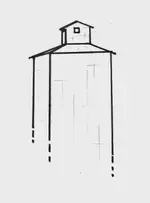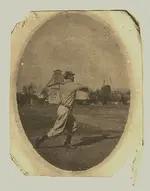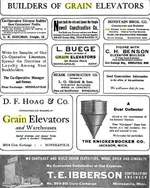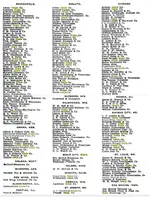SODABOTTLEBOB
Silver Member
"Play Ball" 
I went to a swap meet recently and purchased an old, framed baseball player photo that I paid $10.00 for. I have already done quite a bit of research on it that can best be summed up with the following which is how I came up with a date of circa 1900 ... (Also see pictures).
1. The seller said he found it in a box of other junk and didn't know anything about it.
2. The frame is made of tin ~ Appears Victorian ~ Hand painted floral ~ Fold-out standee on back.
3. The frame is oval and measures 3 1/2" x 2 1/2"
4. The photo is sepa colored (brownish) and was developed in an oval shape then cut to fit.
5. Regarding the uniform ...
Uniform Parts:
National Baseball Hall of Fame - Dressed to the Nines - Parts of the Uniform
Caps - 1888 - Spalding:
National Baseball Hall of Fame - Dressed to the Nines - Parts of the Uniform
Shoes - 1883 - Spalding: National Baseball Hall of Fame - Dressed to the Nines - Parts of the Uniform
Uniform/Collar - Last Used 1906
National Baseball Hall of Fame - Dressed to the Nines - Parts of the Uniform
Uniform/Beltless - First Used circa 1910
National Baseball Hall of Fame - Dressed to the Nines - Parts of the Uniform
Earliest Numbering of Jerseys - 1907-09
National Baseball Hall of Fame - Dressed to the Nines - Parts of the Uniform
Baseball History - First Major Leagues 1871 thru 1875
History of baseball in the United States - Wikipedia, the free encyclopedia
Grain Elevators: Grain Elevators -- History
Pictures, etc ...
1. Framed Photo.
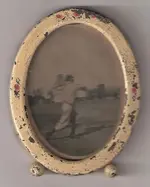
2. Photo Only.
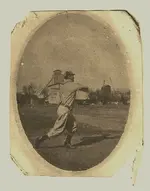
3. Frame and Back. (Glass Not Shown).
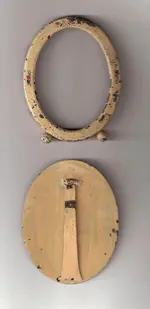
4. Cropped Photo. I cannot read the words on the grain elevator.
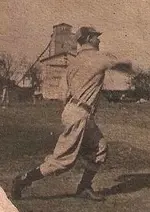
Shoes from above link ~ He appears to be wearing #1 ~ Solid black high top. Ad is from 1883 Spalding catalog.
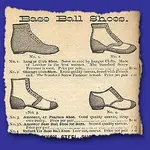
Cap ~ Appears to be either #11 or #19 ~ Mulit-sectioned top part. Ad is from 1888 Spalding catalog. I can't tell in my photo if the player is wearing a short or a long bill cap.
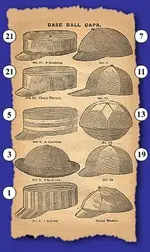
Uniform Pants/Beltless ~ Player in my photo is wearing a belt. Belts were last used on uniforms around 1910. This picture is the earliest known example that shows a beltless player and is dated 1913. It is said that prior to 1913 most players wore belts until they were discouraged and possibly even banned because defensive players would sometimes grab hold of the belt to stop an advancing runner.
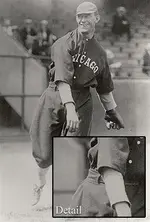
Footnotes:
1. The Major Leagues were first introduced around 1871 to 1875.
2. Uniform numbering was first introduced in Major Leagues around 1907-1909. (My player has no visible number on his jersey.
3. Uniform "Collars" were last used around 1906. My player's jersey appears to have a collar.
Bottom Line Questions ...
1. Can you think of anything I missed?
2. do you agree with the circa 1900 date?
3. Do you think the player is ... Hometown Team ~ Farm/Minor League ~ Major League?
4. Can you think of any way to identify the location?
5. And what about the grain elevetor? Any clues there? Midwest?
6. And most important of all, do you happen to recognize The Player?
Thanks in advance for your time and interest. I realize I am asking some tough questions that may be impossible to answer, but I thought it would be fun anyway because Baseball season is upon us and I know there are a lot of fans out there like myself.
Sodabottlebob

I went to a swap meet recently and purchased an old, framed baseball player photo that I paid $10.00 for. I have already done quite a bit of research on it that can best be summed up with the following which is how I came up with a date of circa 1900 ... (Also see pictures).
1. The seller said he found it in a box of other junk and didn't know anything about it.
2. The frame is made of tin ~ Appears Victorian ~ Hand painted floral ~ Fold-out standee on back.
3. The frame is oval and measures 3 1/2" x 2 1/2"
4. The photo is sepa colored (brownish) and was developed in an oval shape then cut to fit.
5. Regarding the uniform ...
Uniform Parts:
National Baseball Hall of Fame - Dressed to the Nines - Parts of the Uniform
Caps - 1888 - Spalding:
National Baseball Hall of Fame - Dressed to the Nines - Parts of the Uniform
Shoes - 1883 - Spalding: National Baseball Hall of Fame - Dressed to the Nines - Parts of the Uniform
Uniform/Collar - Last Used 1906
National Baseball Hall of Fame - Dressed to the Nines - Parts of the Uniform
Uniform/Beltless - First Used circa 1910
National Baseball Hall of Fame - Dressed to the Nines - Parts of the Uniform
Earliest Numbering of Jerseys - 1907-09
National Baseball Hall of Fame - Dressed to the Nines - Parts of the Uniform
Baseball History - First Major Leagues 1871 thru 1875
History of baseball in the United States - Wikipedia, the free encyclopedia
Grain Elevators: Grain Elevators -- History
Pictures, etc ...
1. Framed Photo.

2. Photo Only.

3. Frame and Back. (Glass Not Shown).

4. Cropped Photo. I cannot read the words on the grain elevator.

Shoes from above link ~ He appears to be wearing #1 ~ Solid black high top. Ad is from 1883 Spalding catalog.

Cap ~ Appears to be either #11 or #19 ~ Mulit-sectioned top part. Ad is from 1888 Spalding catalog. I can't tell in my photo if the player is wearing a short or a long bill cap.

Uniform Pants/Beltless ~ Player in my photo is wearing a belt. Belts were last used on uniforms around 1910. This picture is the earliest known example that shows a beltless player and is dated 1913. It is said that prior to 1913 most players wore belts until they were discouraged and possibly even banned because defensive players would sometimes grab hold of the belt to stop an advancing runner.

Footnotes:
1. The Major Leagues were first introduced around 1871 to 1875.
2. Uniform numbering was first introduced in Major Leagues around 1907-1909. (My player has no visible number on his jersey.
3. Uniform "Collars" were last used around 1906. My player's jersey appears to have a collar.
Bottom Line Questions ...
1. Can you think of anything I missed?
2. do you agree with the circa 1900 date?
3. Do you think the player is ... Hometown Team ~ Farm/Minor League ~ Major League?
4. Can you think of any way to identify the location?
5. And what about the grain elevetor? Any clues there? Midwest?
6. And most important of all, do you happen to recognize The Player?
Thanks in advance for your time and interest. I realize I am asking some tough questions that may be impossible to answer, but I thought it would be fun anyway because Baseball season is upon us and I know there are a lot of fans out there like myself.
Sodabottlebob

Last edited:




